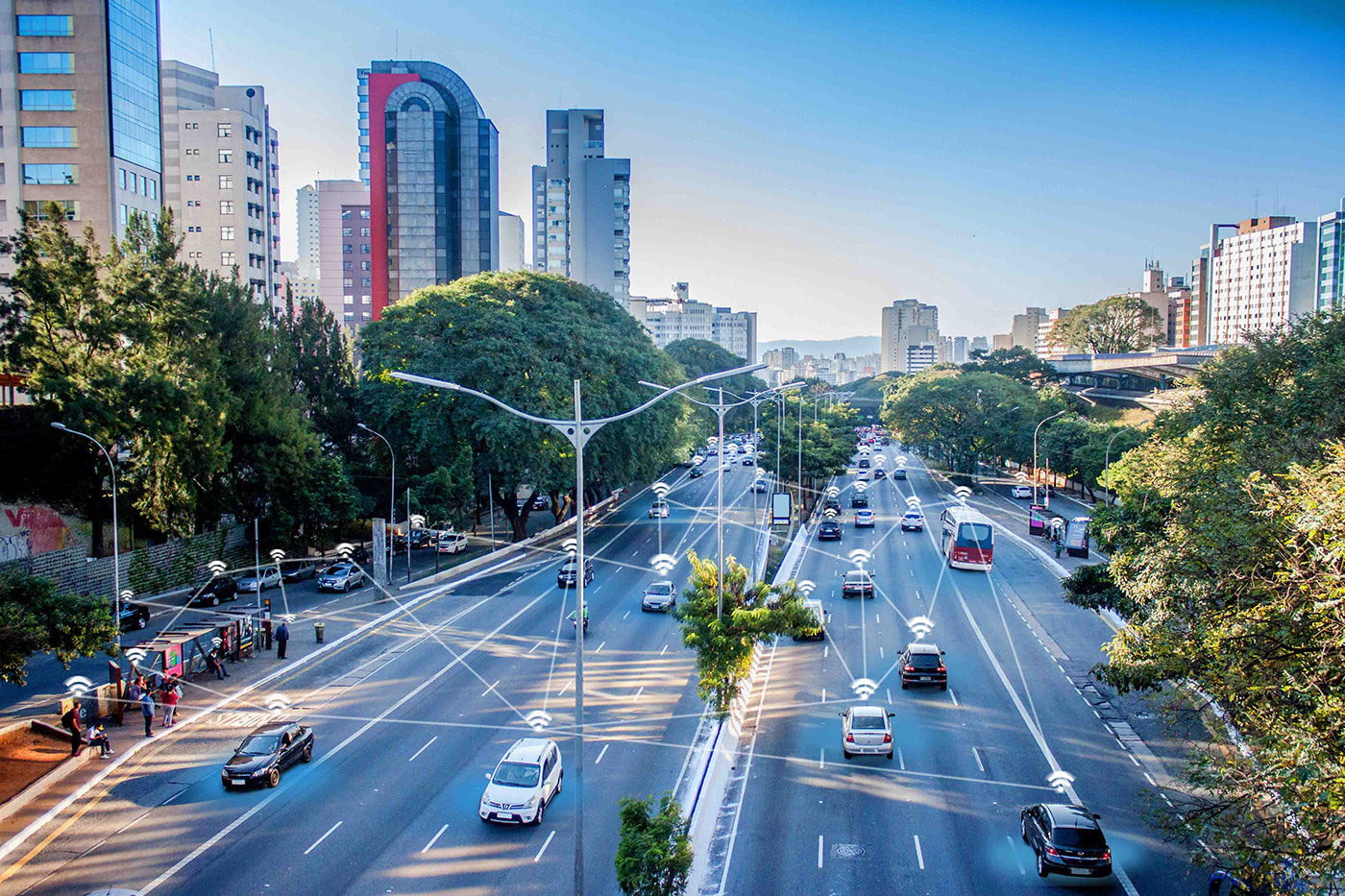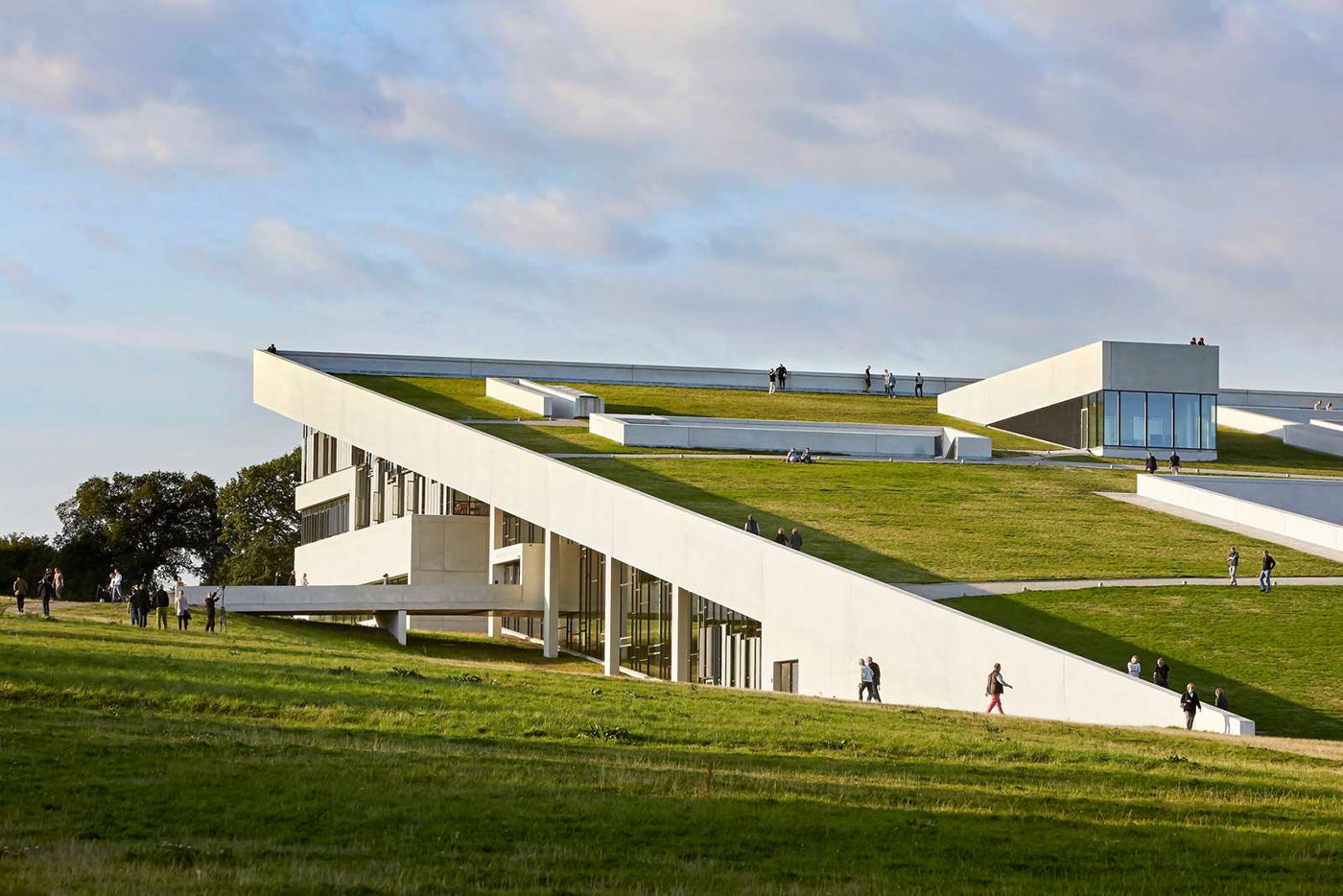
The Therapy of Joana Choumali’s Threading
Dreamlike depictions from a Prix Pictet winning photographer
"My work helps me understand life better and understand myself. It allows me to heal and grow as a human being, and to connect with others without having to talk," explains Joana Choumali. The Ivorian photographic-textile artist depicts life in African cities with embroidery, creating dreamlike scenes that allow her work to comment on mental health, trauma, and hope through a comforting guise.
Born in 1974 and based in Abidjan, Côte d'Ivoire, Choumali began experimenting with photography as a child. She has always used the medium as a meditative and intimate form of documenting people and life, but she gained international acclaim for her 'Ça va aller' series following the Grand-Bassam terrorist attacks of 2016. After the shootings, she began to notice the people's mood shifting and this prompted her to explore embroidery within her work. She would photograph ordinary scenes shortly after dawn and then later incorporate handcraft ornamentation to the image. This painstakingly slow process would often take weeks for one image, but the technique breathes new life into 'ordinary' images. A melancholic and otherworldly quality transforms the work and its message, whilst also creating a space for her to explore how locals coped with life after a terror attack.

'_Dream Leftovers_,' 80x80cm from the series 'Albahian,' by © Joana Choumali, 2019.
Textile craft in the art world has gained recognition since the 1970s, American artist Faith Ringgold was a leading voice promoting this change. Choumali's approach materializes on this momentum. Her work was heralded as a success and a shift in opinion concerning mixing embroidery and photography. Her soft and silent way of documenting manifested itself into the voice of those living in shock, but it also embodied the optimism of people determined to rebuild their lives after the attack. Having continued to champion this process of creation and portrayed life across different African cities, her work has become symbolic in her homeland. We delve into her processes of hand stitching, discuss the spirit of togetherness, and explore mental health in Côte d'Ivoire and beyond.
From the outside, it feels like you use photography as a ceremony to capture a moment in time. What is the power of photography to you? In which ways can it be a service to society?
I am fascinated by the morphing of societies. I observe the interactions between communities, cultures, and continents. I like to discover and explore my culture through a story that is uncommon. I want people to feel something about the images I produce, whether it is negative or positive. I aim to show certain nuances of our cultures, by showing today’s Africa from angles that seem so ordinary to us here, yet we overlook or forget them. Although these aspects translate the continent’s social and cultural mutations very precisely, and I can extend it to the whole world. In that sense, photography can be a tool to open conversations and create a deep connection between human beings.

'Conversation With Younger Self_,' from the series 'Albanian,' 50x50 by © Joana Choumali 2019.
“At that time, I could see the strength of the human spirit and the power of time passing–this wonderful ability to recover from trauma," you say about "Ça va aller." How do Ivorians cope with trauma? Can you describe the atmosphere of the city after the attacks?
Ivorians do not discuss their emotions and feelings easily and mental health is not a topic. The most usual way to address it is through humor and jokes, or avoidance. Most conversations end up with "Ça va aller," which is a polite and subtle way to close a conversation. I returned from my art residency in Morocco on the same day as the Brussels attacks. Then, three weeks after the attacks, I went to Grand-Bassam to attend a conference organized by the Ivorian Society of Psychiatrists. The conference‘s theme was 'How To Cope With The Trauma of A Terrorist Attack.' To explain to the population of Grand Bassam how they could understand and work on the trauma, and to beg them to come to the free consultations at the General Hospital of Grand Bassam, people hardly talked about their experience and trauma. They would end the conversation with this very Ivorian expression: "Ça va aller" (it will be okay).
I meet people who would want to pose for a documentary project, and I was willing to go there to photograph them and tell their stories. Then I walked around the little town and shot pictures of the neighborhood. Three weeks after the attacks, the atmosphere of the little town changed. The energy was different as if life was painfully running in a melancholic slow motion. Most of the pictures show people by themselves, walking in the streets, just standing, sitting alone, lost in their thoughts, and empty places. I began embroidering the images on the printed canvas as a way to cope with my own emotions as if I was connected to the people in the images. It was only after this, when back in Abidjan, that I realized that my state of health would not allow me to continue to work on this documentary project I was planning to start. But the urge to express myself was still there. So, from my room, I started embroidering on the prints of the street photos shot with my smartphone. I had this urge to express myself and to continue to work, to spend time with the pictures and at some point connect with the landscape and the reminiscence of what I felt when I was in Grand Bassam.
Your work reinterprets the beauty of African towns such as Abidjan, Dakar, Casablanca, or Accra into poetic pieces. You break the delusion that beauty needs to be orderly and neat. What does beauty mean to you? What are you trying to show the viewer about these places and what they mean to you?
The African megalopolis is never or rarely associated with an idea of poetry, but there is a beauty and delicacy in every corner if you know how and when to look. Even there it is possible to find magic and poetry. I do believe that poetry is everywhere. Walking in the morning for me is like walking on a white page where anything can be printed. The first emotion that I feel is that of being in a neutral and safe place where my emotions find a way to synchronize with the environment. I constantly experience a very mixed and conflicting set of emotions that I can’t describe. But it is easier for me to express the complexity of them in an image.

'Sans Titre,' from the series "Ça Va Aller" by © Joana Choumali, 2019.
You recently said you "fully understand the mental effect of hand stitching." How does this medium impact your mental health? How does the slow process contribute to the way you create art?
The fact that I allowed myself to embroider on my images instinctively really marked a turning point in my way of understanding and processing life through my art. My inner universe merges with the exterior which is the photo I shot. The meditative approach allows me to discover another way of experiencing certain events in my life.
I am a self-taught embroiderer and I started in a very instinctive way, always using the same stitch as if it was to repair a wound. I am particularly drawn to the idea of spending a lot of time on a picture that was shot in a snap. It sometimes took me several weeks to work on one picture, to 'download' energies, thoughts, feelings, hopes, fears, and joy. It can be compared to automatic scripture. I remember my grandmother used to stitch all day, doing patchwork with little leftovers of wax fabrics. I was fascinated by her patience. This kind of patchwork is called ‘N’zassa,’ which in the Agni language means a fabric resulting from the arrangement of several pieces of loincloths of various patterns and colors. N’zassa also represents the unity of the numerous cultures that you can find in my country, coming as one. Different yet complementary. It has had a very positive impact on my life. Each medium is important as it merges into one piece. In the meantime, I like to push the boundaries of photography. To explore other ways to use photography in a more personal, intimate way. At a slow pace.

'_New Normal_,' 80x80cm from the series 'Albahian,' by © Joana Choumali, 2020.
"My art is a testimony of my time, of what surrounds me, of the multitudes of cultures, subcultures, and phenomena that I observe, whether on my continent or outside. I like to draw parallels between what brings humans together rather than what divides them," is a beautiful quote from you. Why are togetherness and hope important to your work?
My art comes from this perception of the environment and the tacit connection I feel between the people I photograph and myself. Also the relation to space and the landscape. Within the ambient energy of a place, the non-verbal dialogue can take place. I use my imagination and focus on the meeting point between my emotions and how other people’s emotions contribute to this capture. When I shoot a picture, I feel like I receive something and I also leave a part of myself. Art allows me to start this dialogue of hope with a place or a person. Just being a witness to this situation can make me an actor in it.
For "Ça va aller," the very notion of observing this bruised and bereaved city made me realize how full of life and joy it was before. I recognized and captured a point of hope in these difficult times by reminding myself of what this space was before, by acknowledging the contrast of what it had become following the terrorist attack, and by visualizing us and projecting in the aftermath while accepting the fact that it may never be the same. It is an act of hope and resilience that we can all do. For me, it translated into a creative process. I focused on an observation of the streets I photographed, then I filled these empty spaces with these colored threads. It is in my nature to observe and focus on the positive and what I can always learn from any situation.
Explore a selection of gestalten Visual Culture titles.


